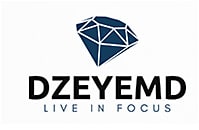Consider these generative artificial intelligence tools and tips for social media and beyond.
Visual content is becoming an increasingly popular medium to communicate with and capture the attention of your patients and audience.1,2 In previous articles, we explored the application of generative artificial intelligence (AI) in text and copy for social media and practice management. AI can also be used to create compelling and engaging visuals.3
This article explores various tools and applications of generative AI for visual content creation, along with useful tips to maximize its effectiveness.
UTILIZING AI-POWERED TOOLS
AI can be used to generate images and visuals based on user prompts. Examples include Dall·E and StockIMG.AI. AI tools can also alter and enhance user-input images. For example, Background AI aids in the removal of backgrounds or insertion of new backgrounds into images. Similarly, Adobe Photoshop’s Generative Fill function, powered by Adobe Firefly generative AI, allows users to add to or modify images. Meanwhile, Ripl and Nova generate and edit video content.
As an ophthalmology business owner, consider the many potential applications for use of AI-generated visual content in your practice:
- Social media. Use AI to create attention-grabbing thumbnails and filler graphics. Visuals can also be used in short videos on platforms such as TikTok or Instagram Reels. Below is an example of an illustration generated by StockIMG.AI using the prompt “ophthalmology surgery.”

- Branding and website. To establish a strong and consistent visual identity across various platforms, consider using AI tools to create visuals for your personal branding. AI tools such as Remini can help you generate a professional headshot for sites such as LinkedIn. Looka is an AI tool designed to create logos. Below are two example logos generated by Looka after submitting a business name, slogan, theme and desired palette.


- Business communication: Utilize AI-generated visuals in business presentations to enhance communication and engagement. For example, SlidesAI and Gamma AI are tools that help create presentation slides.
TIPS FOR OPTIMIZATION OF AI IMAGES
In previous articles, we recommended adding specifics and details to your prompts to direct the generative AI. Here, we suggest ways to optimize prompts to generate visuals that best fit your goals and needs.
- Specify desired “mood.” Be specific about the atmosphere you want to convey in the visuals. Providing descriptors like happy, inspiring or calming can guide the AI in generating visuals that evoke the intended emotional response.
- Maintain consistent medium and style. Keep the art style and color palette consistent with the brand’s identity across all AI-generated visuals. This allows for coherence and can reinforce brand recognition.
CONCLUSION
Generative AI offers potential in enhancing your social media presence, personal branding and business communication through the creation of visually compelling content. AI can help you enhance the use of visual content in your marketing strategies. OM
REFERENCES
- Yang Y, Tang Y, Zhang Y, Yang R. Exploring the Relationship Between Visual Aesthetics and Social Commerce Through Visual Information Adoption Unimodel. Front Psychol. 2021 Sep 6;12:700180.
- Karpenka L, Rudienė E, Morkunas M, Volkov A. The Influence of a Brand’s Visual Content on Consumer Trust in Social Media Community Groups. Journal of Theoretical and Applied Electronic Commerce Research. 2021; 16(6):2424-2441.
- McKinsey & Company. What is generative AI? https://www.mckinsey.com/featured-insights/mckinsey-explainers/what-is-generative-ai . Accesssed July 31, 2023.











